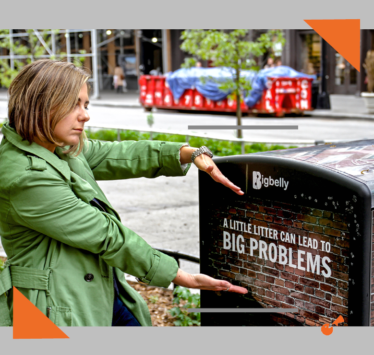
What ever happened to good old pollution?
What ever happened to good old pollution?
Not long ago, I had a conversation with a climate skeptic.
Well, let me be more accurate.
This person believes the climate is changing, so they’re not a skeptic in that sense.
However, they don’t believe it’s caused by, or has been exacerbated by, human activity.
Rather, the changing weather we’re experiencing is just how nature works. It goes through changes. It’s done it before and it will do it again.
Yet…
this same person was excited to hear that my work involves motivating people to adopt more sustainable behaviors.
Because this same person believes we need to take serious and fast action to reduce pollution.
We need emission standards on cars.
We need to save precious and important species.
We need clean water.
We need to do a better job at recycling and reducing waste.
We even need to require that for every farting cow a farmer owns, they should have to plant a tree (but note, they did NOT want to call that a carbon tax).
What’s going on? (cue Marvin Gaye)
So, this person is on board with the things we need to do to keep the planet healthy, clean and safe.
And they’re ready to take action to support that.
Because a clean, healthy place to live is important to them, too.
But they don’t want to talk about climate change and climate action, and…they’re not alone.
The big question for us is: do they need to?
I get it. This type of logic seems illogical to us. How can one support reducing car emissions but not believe that those same emissions are impacting our climate?
We can make ourselves mad trying to solve that riddle.
But what if we accept this as a human truth: there are many people out there who don’t believe that human activity is causing the climate to change AND they also believe we should do everything we can to make it a healthier, cleaner, safer place to live.
What if we spent less time trying to convince skeptics of the facts and instead focused our energy on the areas where we ARE aligned.
What if we…
Went back to good old pollution
Clean air to breathe.
Clean, safe water to drink.
Healthy soil that produces food that’s safe to eat.
An atmosphere that is comfortable and safe to live in.
Continued access to resources that are important to us.
These are specific and personally meaningful outcomes that even climate skeptics can get behind. If you’re able to add in “financial savings”, then even better!
We did it with the ozone layer.
Greenhouse gases. CFCs. Switch your hairsprays, deodorants and suntan lotions to non-aerosol sprays (actionable, specific behaviors). Save the ozone layer so we don’t increase our risks of skin cancer (personal benefits). Shifting social norms. Pressure applied to corporations (social movement). Laws and bans passed.
The benefit we had with the ozone layer was its specificity and clear links between the problem, the effect, and the solution.
That’s harder to achieve when we’re trying to tackle climate change as one giant mass.
We know there’s no silver bullet for slowing climate change.
We need a lot of people to make a lot of changes.
It’s daunting. It’s confusing. And it’s difficult to know where to start.
But we can start by moving beyond our current impasse of arguing whether climate change is real or human-induced or not.
We can start by breaking down solutions into specific actions people can take.
We can start by re-framing the benefits of those action to be more personally meaningful to our audiences: clean air, clean water, health, safety.
And by doing this, we can start to move people forward a whole lot faster.


